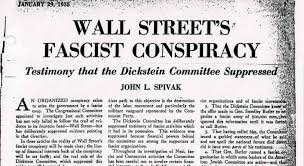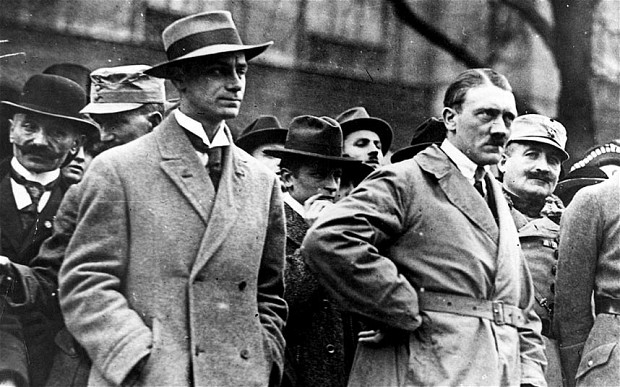Alex Constantine - June 10, 2013
Review of "Tower of Basel: The Shadowy History of the Secret Bank that Runs the World," by Adam LeBor.
If you think the Bank for International Settlements is just a colorless intermediary, Adam LeBor’s new book will disabuse you of that notion.
“Tower of Basel: The Shadowy History of the Secret Bank That Runs the World” is a full-blown attack on the institution, which is based in Switzerland but answers, in the author’s view, to practically no one.
LeBor details the appalling role of the BIS in funding the predations of Nazi Germany, a well-known blot on its record. Then he indicts the bank for its part in the rise of technocratic postwar Europe, in particular as midwife to the disastrous euro. LeBor wants the place shut down, or at least opened up.
He makes a decent case, but only decent. Founded in 1930 by two legendary central bankers -- Britain’s Montagu Norman and Germany’s Hjalmar Schacht -- the BIS was supposed to administer World War I reparations from Germany. But as Keynes and others had argued, the imposition of such crushing reparations was a terrible idea, and not long after the bank was established Germany wriggled out of them.
Yet the BIS lived on, sustained by a founding agreement that gives it an extraordinary degree of autonomy, a safe haven in Switzerland and a revenue stream from transaction fees. Besides, it was useful -- as a facilitator of international transactions and a locus of cooperation among central bankers. It was especially useful to the Nazis.
Nazi Gold
Though headed by an American during World War II, the BIS adhered to a priestly neutrality, interpreting its mandate in the most technical possible fashion in order to continue dealing with all sides in the conflict. Unfortunately, this put the institution squarely in the position of abetting Nazi terror.
The BIS accepted plundered gold and made it possible for Germany to acquire desperately needed war materiel. It even permitted Germany, once it had invaded Czechoslovakia, to confiscate that nation’s gold reserves.
Tarred by its scandalous role in the war, the BIS was targeted afterward for dissolution by enemies in Washington and elsewhere. But it managed to beat back these efforts and eke out a role for itself in the postwar world -- first as the financial mechanism for American efforts to rebuild Europe, and then for the accelerating project of European unification.
Modern Europe
The latter, culminating in the euro, is cause for further damnation by the author, for whom the transnational vision of a modern Europe ruled by mandarins in Brussels and Basel isn’t so different from the Nazi vision of a unified continent equally unruffled by obstreperous voters.
Owned and operated by the world’s central banks, the BIS today is both their banker and their refuge, a place where central bankers meet every other month to dine really well and schmooze in confidence that no one will learn what was said. The BIS also performs valuable research on international finance.
Is this really so bad? LeBor thinks so, complaining that “BIS is an opaque, elitist and anti-democratic institution, out of step with the 21st century.”
Maybe. But his case against the BIS, whose role is wildly exaggerated in the book’s subtitle, would be a lot stronger if he spent any time at all explaining what it does. That would make it easier to judge whether these tasks are important, or could be taken on easily by others.
Unfortunately LeBor describes the bank’s functions in only the most cursory terms. The BIS is secretive, no argument there. But surely the general nature of its lending can be described, as well as the source of its capital and profits. The latter amounted to more than $1 billion tax-free in 2011-12 alone.
Resistant to eradication, the BIS can perhaps be reformed, and here the author has some sensible suggestions, including greater transparency and directing a significant chunk of profits toward philanthropy. After all that’s come before, you’d think the occupants of the tower of Basel (the bank’s groovy round headquarters) would be on their best behavior.
“Tower of Basel” is published by PublicAffairs (336 pages, $28.99). To buy this book in North America, click here.
(Daniel Akst writes for Muse, the arts and leisure section of Bloomberg News. The opinions expressed are his own.)
http://www.bloomberg.com/news/2013-06-09/shadowy-bank-in-basel-funded-nazis-pushed-euro-books.html







